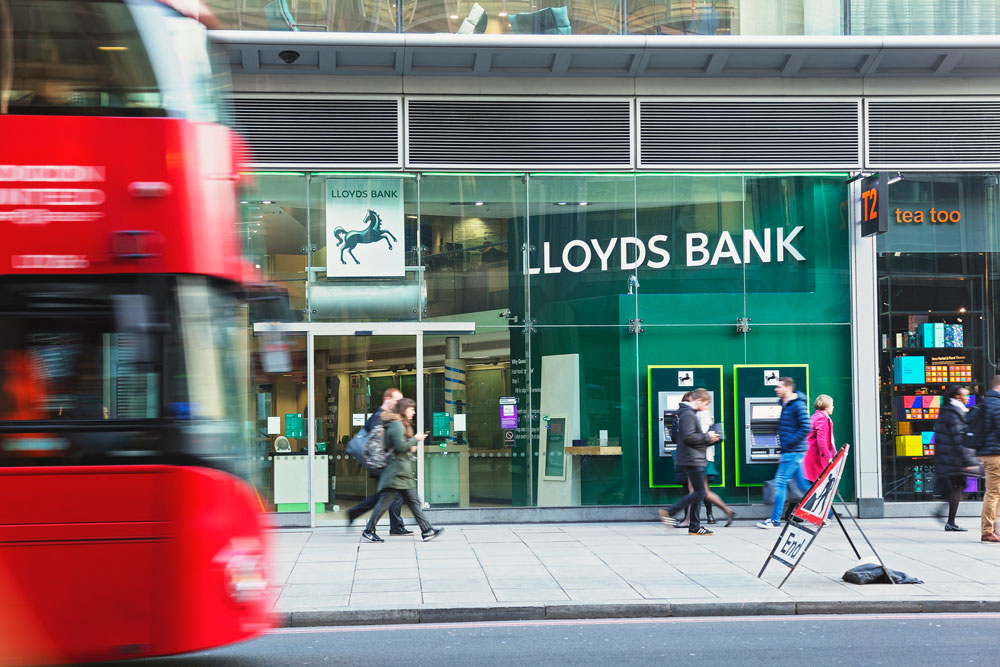Lloyds soldiers on, but the pandemic leaves a scar
Despite Covid-19, the bank is a bellwether for the UK economy and could recover hand-in-hand.
24th February 2021 10:36
by Richard Hunter from interactive investor
Despite Covid-19, the bank is a bellwether for the UK economy and could recover hand-in-hand.

The bank’s fourth quarter performance and outlook comments bode well for the immediate future, but these results were unsurprisingly scarred by the effects of the pandemic.
Historically low interest rates provide an additional challenge, and perhaps one which will outlast the financial effects of the virus.
Net interest margin (NIM) slipped to 2.5% from 2.9% given these lower rates, as well as lower levels of more profitable unsecured lending and higher-quality mortgages. The target of 2.4% in the forthcoming period suggests a plateau and, indeed, the NIM level achieved in the full year was more than most of the bank’s rivals.
The cost/income ratio also worsened to 55.3%, from 48.5% the previous year.
Despite a reduction in overall costs of 4%, the decline of 16% in net income and 13% in net interest income were the culprits for the deterioration. That said, the ratio remains sector-leading by a comfortable margin.
- Chart of the week: Lloyds shares are still recovering
- 10 shares to give you a £10,000 annual income in 2021
- Are you saving enough for retirement? Our calculator can help you find out
Elsewhere the bank has been attempting to stick to its knitting. There was growth of £10.2 billion in the second half in the mortgage book, where Lloyds (LSE:LLOY) has a dominant position and where mortgages usually account for some 60% of its loan book, as well as being traditionally lower-risk lending.
At the same time, the bank’s digital investment is beginning to reap rewards.
Active digital customers now number more than 17 million, and the growth in this space will continue to have a positive effect on costs generally, given the lower marginal costs of expansion.
However, pandemic-related provisions have been the bane of the banks in this reporting season, and Lloyds is no exception.
A further provision has led to an overall figure of £4.2 billion for the year, although this is lower than the range the bank had previously guided of between £4.5 billion to £5.5 billion. The impact is inevitable on a pre-tax profit figure which dropped by 72% to £1.2 billion, from £4.4 billion a year earlier.
Even so, Lloyds remains well capitalised and the CET1 ratio spiked to 16.2% from a previous 13.8%, well in excess of regulatory requirements.
This is also underpinned by a liquidity coverage ratio of 136% and enabled the bank to reinstate a dividend payment.
As has been the case across the sector, the temporary restrictions imposed by the regulator limit the banks’ ability to pay the level of dividends they might wish. Indeed, Lloyds is nudging against the ceiling here, with a payment which implies a yield of around 1.5%.
Overall, Lloyds is making progress on most of the metrics even though the pandemic has left an indelible mark.
The outlook for prospects is rather more promising. Given the bank’s reputation as a barometer for the UK economy, and all things being equal, Lloyds should strongly benefit from the easing of restrictions in the latter part of this year and any economic surge which results.
Those prospects have propelled the shares higher by 43% since the initial announcement of a vaccine in November. Although, over the last year the shares remain down by 29%, as compared to a dip of 7% for the wider FTSE 100.
Rather similar to the improving sentiment towards the UK as a whole by international investors, the market consensus of Lloyds as a cautious ‘buy’ could be subject to further upgrades.
These articles are provided for information purposes only. Occasionally, an opinion about whether to buy or sell a specific investment may be provided by third parties. The content is not intended to be a personal recommendation to buy or sell any financial instrument or product, or to adopt any investment strategy as it is not provided based on an assessment of your investing knowledge and experience, your financial situation or your investment objectives. The value of your investments, and the income derived from them, may go down as well as up. You may not get back all the money that you invest. The investments referred to in this article may not be suitable for all investors, and if in doubt, an investor should seek advice from a qualified investment adviser.
Full performance can be found on the company or index summary page on the interactive investor website. Simply click on the company's or index name highlighted in the article.